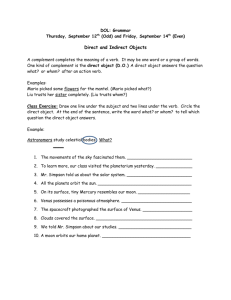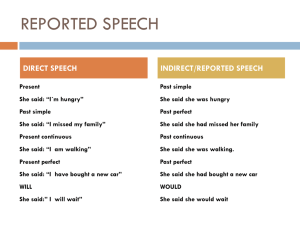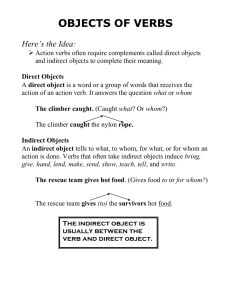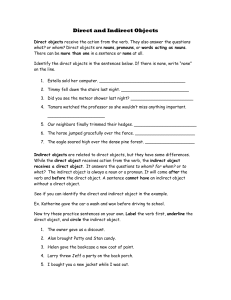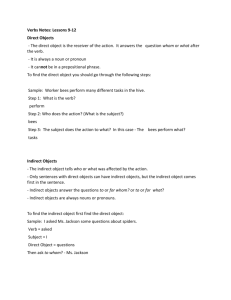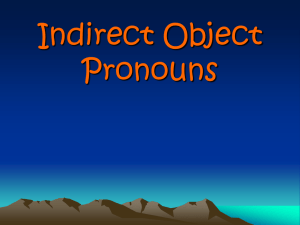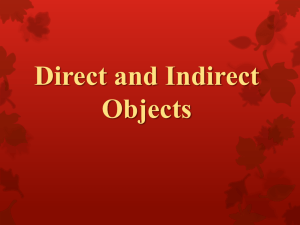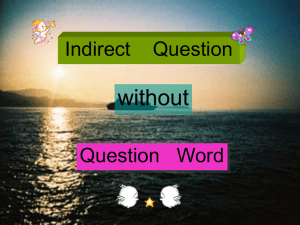Indirect Objects Lesson (corrected)
advertisement
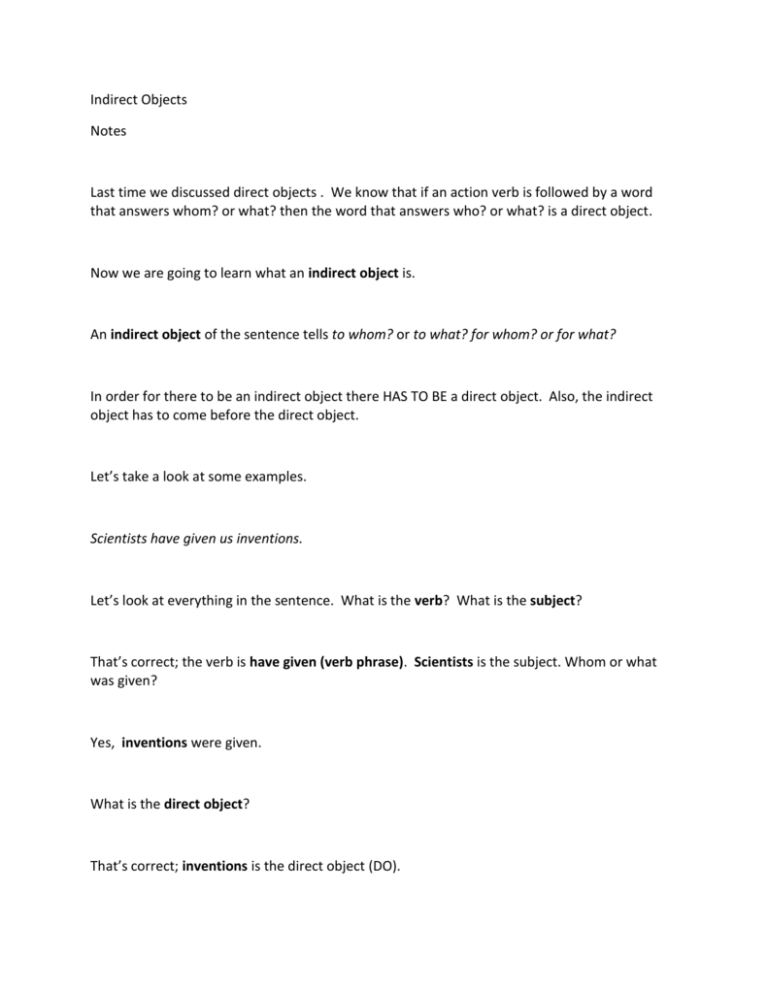
Indirect Objects Notes Last time we discussed direct objects . We know that if an action verb is followed by a word that answers whom? or what? then the word that answers who? or what? is a direct object. Now we are going to learn what an indirect object is. An indirect object of the sentence tells to whom? or to what? for whom? or for what? In order for there to be an indirect object there HAS TO BE a direct object. Also, the indirect object has to come before the direct object. Let’s take a look at some examples. Scientists have given us inventions. Let’s look at everything in the sentence. What is the verb? What is the subject? That’s correct; the verb is have given (verb phrase). Scientists is the subject. Whom or what was given? Yes, inventions were given. What is the direct object? That’s correct; inventions is the direct object (DO). Ok, so to whom or to what were the inventions given? They were given to us. So, us is the indirect object. The mother baked her daughter a cake. For this sentence tell me what each is. The verb (Transitive or intransitive?), the subject, the direct object (DO)—if there is one, and the indirect object. The verb is baked. The subject is mother. The direct object is cake. The indirect object is daughter. Ok, last example: The theater showed the movie to the people. Find the verb, the subject, the DO, and the IO. The verb is showed; The subject is theater; The direct object is movie; The indirect object is………there is no indirect object. People comes after the direct object. Any questions??? Let’s practice:

